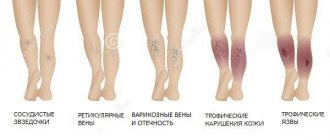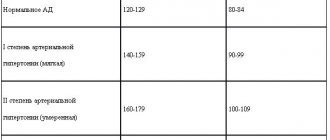Date updated: 10/28/2020 11:17:18 6623 Share:
Author: Maria Feldshtein
*Review of the best according to the editors of simplerule.ru. About the selection criteria. This material is subjective in nature, does not constitute advertising and does not serve as a purchase guide. Before purchasing, consultation with a specialist is required.
The need to determine your blood pressure may arise at some point in every person. The most convenient devices for carrying out this procedure are considered to be automatic blood pressure monitors, which are a cuff with a monitor attached to it. They are valued for their convenience, compactness, and data accuracy. For home use, it is recommended to choose devices that are worn on the wrist rather than on the forearm. The price of such models is lower, and the results are displayed faster. A rating compiled by experts from the Simplerule Internet portal will help make choosing a wrist blood pressure monitor easier.
Tonometer Beurer BC19
Studying reviews of wrist blood pressure monitors, you can note a model from the German company Beurer - BC19 with a voice. The work is carried out automatically after pressing a button on the control panel. The measurement results are displayed and reflected in graphics according to WHO. For people with low vision, manufacturers have equipped their creation with a voice function that is adjustable in volume.
Peculiarities:
- The memory is designed for 2 users with storage of 60 measurements for each;
- Voice notification for arrhythmia, results output, system failure and low battery;
- Manufacturer's warranty 3 years;
- Several languages;
- Adjustable cuff for children and adults;
- Automatic shutdown.
Advantages:
A good model on the wrist with a voice function, a removable case and batteries included, which are enough for 250 measurements.
Flaws:
No AC adapter, battery powered only.
Overall rating:
The Beurer BC19 is suitable for all categories of people and guarantees measurement accuracy with an error of up to 8 mmHg. It can be used at work, on the road and in the hospital, without taking up much space even in a woman’s purse.
How to choose a tonometer
Buying a wrist tonometer is not a problem, because the devices are available in almost every pharmacy. The main difficulty lies in choosing a model, since not all users know what parameters to pay attention to. To purchase a good device, experts recommend taking into account its following characteristics:
- Display and Character Size
. For older people with poor vision, a wide screen with large symbols and backlighting will be more convenient.
- Cuff Features
. Its length should fit your wrist well. In children's models, this parameter is 3.5 - 15 cm, for patients aged 10 years and above it is increased to 22 - 42 cm. If you buy a device for a family, then it should be possible to change the element.
- Data Accuracy
. According to accepted standards, the range of permissible error in tonometers is within 15 units. At the same time, the instruction manual often indicates a measurement error of less than 3 mmHg. Art. Users usually misperceive this information. It only indicates an error in the cuff pressure indication.
- Functional
. Users will find useful options such as setting the time, date, alarm clock, and sound notification of the result. The presence of an arrhythmia indicator will allow you to more accurately measure pressure, since in such a pathological condition the readings may be slightly distorted. Most models provide the ability to simultaneously measure heart rate.
- Power supply
. The best choice would be a tonometer that runs on batteries and mains power. This feature allows you to take the device with you, and also eliminates the need to urgently replace the power source if it fails.
- Memory
. Modern devices are capable of storing up to 50–70 indicators, which allows you to monitor the dynamics of pressure changes over 7–10 days.
- Quality of materials
. The strength of the housing affects the service life of the device.
- Price.
Depends on the number of additional functions and the country of manufacture.
Omron R2 tonometer
The Japanese-made Omron R2 model has a compact size and memory for 30 measurements, which helps the patient regulate medication intake and monitor health. Due to the adjustable cuff in the range from 13.5 to 21.5 cm, this device is included in the rating of popular tonometers due to its convenience for all age groups.
Peculiarities:
- Indicator of arrhythmia and high blood pressure;
- Convenient case for transporting the device;
- Manual in Russian;
- Large display;
- 5 year warranty.
Advantages:
Convenient storage due to the plastic case. All the necessary functions for monitoring blood pressure and heart rate. Suitable for self-diagnosis and medical practice.
Flaws:
No voice guidance.
Overall rating:
Omron R2 is one of the inexpensive blood pressure monitors for home use, trips and trips, as well as visually impaired people. Battery life reaches 300 measurements.
Basic rules for measuring blood pressure using a wrist device
It is important to learn how to properly measure blood pressure using a wrist blood pressure monitor. The best choice is an automatic blood pressure monitor, tested using a cuff that you place on your wrist. It is best to take two measurements a few minutes apart. Ideally, the test is carried out at a certain time, because the result is influenced by many factors, such as physical activity, fatigue, food eaten or weather. When taking medications, it is also better to check your fasting blood pressure in the morning. The blood pressure cuff should be placed directly on your wrist, a few centimeters above your palm. It needs to be put on your hand and adjusted around the circumference. It should not be squeezed tightly, but it should also fit tightly to the hand. Having prepared properly, you can press the start button.
Measuring pressure on the wrist, as well as on the shoulder, is best done without movement or noise. During the examination, you cannot talk, eat, drink, and it is best not to move. Right before the test, you need to take 5-6 deep breaths and relax your whole body.
Beurer BC30
If there are more than 2 people in a family who need pressure monitoring, then from the rating of devices on the wrist we can highlight the Beurer BC30 model with 3 memory blocks of 40 cells each. In addition to its compactness, this device has advantages over other measuring systems - WHO scale, arrhythmia indicator, heart rhythm failure icon.
Does not require outside help, can be easily adjusted by an inexperienced patient. The cuff is adjustable in volume for thin and full arms.
Peculiarities:
- WHO classification, the ability to identify a risk zone;
- The measurement result is stored in memory with date and time;
- In addition to the date, the device displays the charging status of the device;
- Manufacturer's warranty 3 years.
Advantages:
Convenient measuring device for 3 people. The set includes a bag for storage and transportation. The minimum error of readings is 3 mm Hg.
Flaws:
Not detected.
Overall rating:
The Beurer BC30 is the best all-rounder for home use. The display shows average blood pressure, heart rate, and the state of the cardiac system according to WHO, which is convenient for monitoring health after a stroke and during medical therapy.
Accuracy of wrist blood pressure monitors
To reliably read the pulse on the wrist, specialists (again NISSEI specialists!) have come up with two original solutions. First: make a double heart rate sensor. Since there are two arteries on the wrist, there should also be two sensors, the solution turned out to be simple and original. To further improve accuracy and eliminate external interference, the sensors must fit tightly and correctly to the arteries. And then a second original solution appeared - a specially shaped cuff that ensures that these sensors adhere to the arteries. Thus, wrist blood pressure monitors read the pulse even more accurately than upper arm blood pressure monitors because the pulse wave does not need to travel through the tube from the cuff to the blood pressure monitor. This had a very good effect on the accuracy of NISSEI wrist tonometers. But there are also disadvantages, or rather, stricter rules of use. They will be discussed below.
In general, the accuracy of wrist blood pressure monitors with dual pulse sensors is equal to or better than that of automatic shoulder blood pressure monitors. This statement is supported by the awards for accuracy that NISSEI wrist blood pressure monitors consistently receive:
The most accurate tonometer - the NISSEI WS-820 tonometer received the highest score for accuracy in the test of the German Hypertension Society, beating all devices on the shoulder and wrist.
Clinically proven accuracy - the NISSEI WS-1011 blood pressure monitor has received recommendations from the European Society of Hypertension (ESH) for use in clinics and healthcare settings. This indicates the unconditional accuracy of the tonometer readings.
Medisana HGF tonometer
One of the best wrist blood pressure monitors is Medisana HGF, manufactured to international standards and clinically tested. Helps you accurately diagnose upper (systolic) and lower (diastolic) blood pressure anytime, anywhere. Due to the built-in memory, you can monitor 2 users simultaneously, recording up to 60 measurements independently of each other.
The oscillometric measurement method makes it possible to optimally accurately determine the state of blood flow through a microprocessor in the cuff of the device. In the event of a malfunction, heart rhythm disturbance, or any abnormal hand position, all indicators are displayed on the device display. The final assessment of the result can be carried out using the WHO scale.
Peculiarities:
- The sensitivity of the microprocessor and the admissibility of measurements for the elderly, athletes and for the prevention of ischemic diseases at any age;
- WHO scale;
- Arrhythmia tracking;
- 3 year warranty;
- Fuzzy logic measurement technology.
Advantages:
Large amount of built-in memory. Compact size and long operating period without changing batteries. Affordable price.
Flaws:
There is no charge indicator or voice guidance.
Overall rating:
Medisana HGF tonometer is a model for home use and blood pressure monitoring without assistance. Does not require power supply, is easily operated by an inexperienced user and is equally suitable for both passive and active people.
Rules for measuring pressure with a wrist tonometer
Briefly, the rules for measuring with a wrist tonometer, and indeed the rules for measuring pressure in general, can be formulated as follows: behave as if a doctor was measuring your blood pressure. Namely:
- Before measuring, sit for 5 or preferably 10 minutes to calm your heartbeat and breathing.
- During the measurement, sit straight and calm, do not press your legs under you.
- Don't talk, don't twist, don't stretch your neck, don't turn your head.
- Hold the hand with the blood pressure monitor at heart level.
- If you need to rest your hand on something, make sure that nothing puts pressure on or interferes with the blood pressure monitor cuff.
- The tonometer is worn directly on the arm, not on a shirt cuff or over clothing.
- The measurement can be taken on both the right and left hand. There may be a difference of up to 10 units between the left and right hands, this is normal. In some cases of cardiovascular disease, the difference may be higher.
Just spend five minutes measuring and nothing else. The tonometer will give you the most accurate result.
Rules for using a wrist tonometer
- Place the tonometer on your arm with the screen facing you, so that the device itself is located on the inside of your arm.
- Button the cuff tightly, but not too tightly so that you can fit your little finger under the cuff
- The tonometer should be located 1-1.5 cm (about the width of a finger) below the wrist crease
- During measurement, the hand with the tonometer should be at the level of the heart
Do not hold the device by the cuff - this may interfere with the measurement!
The above rules can be applied to any blood pressure monitor, automatic, electronic, shoulder and wrist. It's just that wrist devices are more sensitive to such interference.
Wrist tonometer AND UB-202
Having an automatic blood pressure monitor AND UB-202 for personal use is recommended not only for patients with hypertension, but also for athletes to choose the right sports training program and load on the cardio system.
Peculiarities:
- Cost-effective with great functionality;
- Simple control with the “Start” button;
- The speed of blood pressure measurement is 30 sec;
- The batteries last for 400 measurements;
- Affordable price;
- Memory for 90 measurements.
Advantages:
Comfortable design and cuff adjustment. There is no dependence on external power sources.
Flaws:
There is no WHO scale.
Overall rating:
Model AND UB-202 is recognized as the most economical in terms of energy consumption and cost. Recommended for athletes and patients during home treatment, for travel, as well as for quick diagnosis of heart rate and blood pressure in transport.
Medisana HGC tonometer
In addition to standard equipment with all functions, Medisana HGC has a voice notification mode, which is convenient for the visually impaired and the elderly, the disabled and passive patients with impaired motor activity.
Peculiarities:
- Color graphic display of results according to the WHO scale;
- Built-in memory for 60 readings;
- Button backlight;
- Voice accompaniment.
Advantages:
The upper and lower pressures are displayed simultaneously with the time and date of measurements. The results are saved in the device memory. Can be used in the dark due to the button illumination and voice notification.
Flaws:
Not found.
Overall rating:
The Medisana HGC model can be used in home and hospital settings, and is also suitable for passive patients with poor health.
What are the types of tonometers?
Not everyone knows, but the first tonometers were mercury and were a bit like thermometers. The device bore the complex name “Riva-Rocci mercury sphygmomanometer” after the Italian scientist who became its creator, and coped with its duties quite well, but was difficult to use and also dangerous - the glass flask with mercury was easy to damage.
Of course, now no one uses such a complex and unsafe device; it has been replaced by much more convenient and no less accurate devices.
Today there are three main types of tonometers. Let's take a closer look at each of them.
- Mechanical
A classic option found in almost every home. Doctors value it for its high accuracy of readings, but warn that you need to know how to use such a device, otherwise the information received will be inaccurate.
The auscultatory measurement method was invented at the beginning of the 20th century by the Russian scientist, surgeon Nikolai Korotkov. Before listening with a stethoscope, doctors used palpation.
The principle of operation of a mechanical tonometer is as follows: a special cuff is put on the patient’s arm in the forearm area, which is fixed with Velcro. A special pump pumps air into the cuff to such an extent that the artery is completely compressed. The doctor determines the cessation of blood flow by the absence of corresponding sounds through the stethoscope. Then, for greater accuracy, the pressure is increased a little more, and then the air is released very gradually. At the moment when the first noise appears, the pressure gauge records the systolic (or upper) pressure. The blood flow is gradually restored, and the measurer hears the so-called Korotkoff sounds. When the artery is fully opened, the noise disappears, and the numbers on the pressure gauge show the diastolic (lower) pressure.
Despite the fact that this type of device is still quite often used in medical institutions, it has a number of significant disadvantages:
— the method requires some preparation from the measurer;
— self-injection of air using a pump increases performance by 10-15 mmHg. Art.;
- older people, due to physiological decline in hearing and vision, may incorrectly see the numbers on a pressure gauge or hear tones in a stethoscope;
— incorrect technique for pumping and bleeding air can distort the results;
— the device must be calibrated regularly.
- Automatic
A much more convenient device that even a child can handle. In this case, technology will do all the work for a person. All the patient needs to do is put the cuff on correctly and press a button to start measuring.
The device records fluctuations in air pressure in the cuff created by blood flow in the pinched artery. The smart device registers them and displays them on the monitor in digital form. This technique is called oscillometric.
Such devices can determine not only pressure, but also heart rate, and also detect the presence of arrhythmia. In addition, the received information is stored in the device’s memory and can be transferred to a computer.
- Semi-automatic
Like a more advanced analogue, they work using the oscillometric method, but here you still have to work with your hands - the air is pumped in using a pump, but released under the influence of automation.
pixabay.com/stevepb
Omron R1
Omron R1 is suitable for self-monitoring of blood pressure and heart rate on the road, at work and at home. The digital display shows all readings in a short period of time. The built-in intelligent system automatically regulates the degree of inflation of the cuff.
Peculiarities:
- Compact size and storage case;
- Automatic inflation of the cuff;
- 5 years warranty for the device;
- Adjustable cuff.
Advantages:
Saving the latest measurements. A convenient device for active users and athletes. You can monitor your blood pressure uninterruptedly at any time.
Flaws:
There is no arrhythmia indicator or voice guidance.
Overall rating:
Omron R1 is an ideal option for home use at a low price. All the necessary functions, as well as a plastic case for transportation, make the device mobile and useful on the road, in the gym, in the hospital, and in the country.







